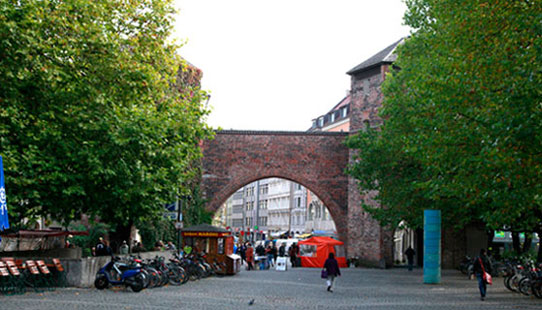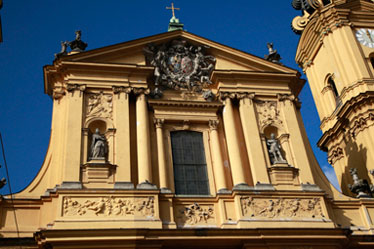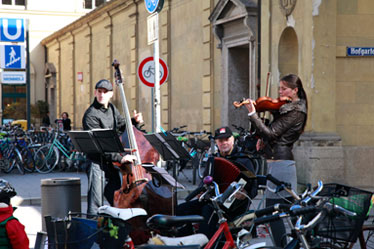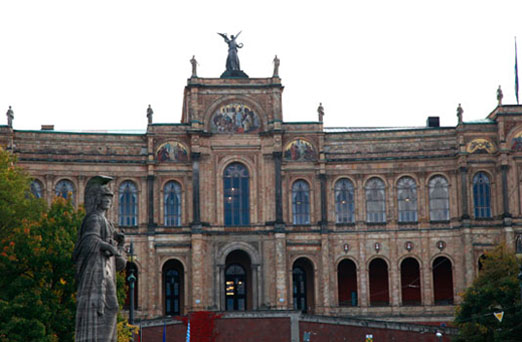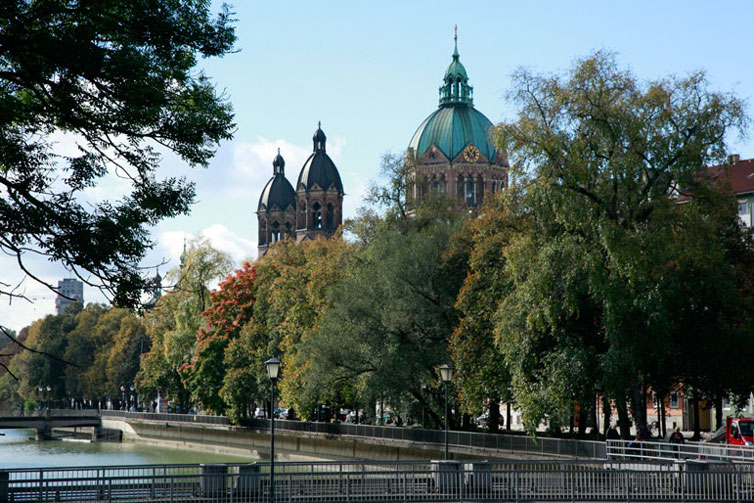Childhood Dreams
Munich - Marienplatz and the Old Town
When we watch television, we usually watch the local Japanese channel, so I was unaware of the existence of Rick Steves.
Our daughter Jeanette, however, is a fan. When she and her husband Morgan decided to join us in Munich, she immediately
purchased his book about Germany and began researching the hotels he recommended.
She corresponded with the staff at one of the hotels - the Hotel Uhland - and was quite excited when she
was able to secure 2 rooms for us. I was just happy that I could stop researching hotels in Munich and that at least one
reservation had been made, but the Hotel Uhland turned out to be a lot of fun. The price was reasonable, and the place
definitely had a lot of personality.
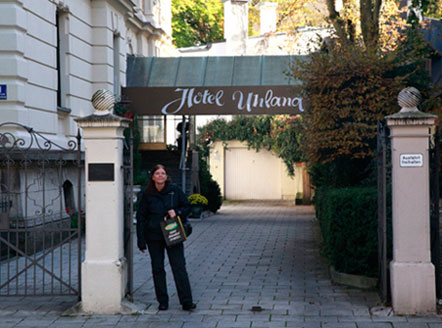

The train ride to Munich took about 4 hours. As we traveled south, we left the dreary weather of Koln behind. The sun
shone brightly and the sky turned a brilliant blue. Windmills dotted the hillsides, and we passed through pleasant litte
towns.
We arrived around dinner time and lugged our stuff several blocks to the hotel. We were a bit surprised by the
impeccably dressed black man who checked us in. He spoke English like an American although he didn't seem to be one.
Where were the people in Bavarian outfits pictured on the web site?
They appeared the next day at the breakfast buffet. These pictures are from the Hotel Uhland website.
Jeanette and Morgan wouldn't be arriving until late in the day, so after breakfast we set out to explore Marienplatz -
the old town center.
This is the New Town Hall, which is famous for its glockenspiel. The US military used the building as
its headquarters in 1945 because it somehow managed to survive the bombing raids during the war.
Forty statues of nobels and royalty adorn the facade.
In an uncharacteristic occurrence of completely accidental perfect timing, we arrived at the square 10 minutes before
the glockenspiel sprang into action for one of its three daily performances. The bells begin to chime, and after a minute
or so the circular base on the upper level begins to turn. The scene is of a royal wedding, including a jousting event. After the
joust, the barrel makers on the lower level celebrate with a dance.
To the right of the New Town Hall is the Old Town Hall which was destroyed during the war but later reconstructed.
We enjoyed wandering through the streets which are supposedly closed to traffic although we did seem to encounter a
considerable number of vehicles. Sadly, most of the stores were high end chains. I searched in vain for the type of
souveniers I enjoy accumulating in Japan - primarily little cat objects like the ones on the menu panel on the Japanese
pages of this website. I did enjoy the interesting architecture, however, and the abundance of outdoor cafes. People in
Germany love to eat outdoors no matter what the weather.


This is Max Joseph Platz. The statue is of King Maximilian who was appointed as the King of Bavaria by Napoleon
in 1806. Max Joseph proved to be a liberal and popular king who established a constitution, emancipated Protestants
and Jews, and authorized the construction of many grand buildings. The building behind the statue in the picture on
the right is the National Theater. The building in the picture on the left is the Residenz. Curiously, many of the
outside walls of the Residenz are covered by cloth hangings printed with pictures of the way the walls themselves
actually look underneath.

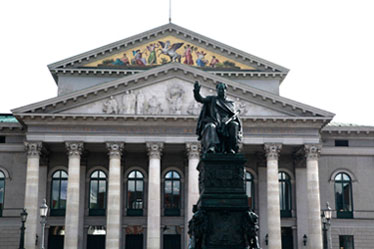
Eventually we wandered onto a large square called Odeonsplatz. The area was just outside the city walls in 1816
when Ludwig I commissioned its construction. He envisioned it as both a triumphal gateway to the city and the starting
point of a large road leading to the outer districts.
This is the entrance to the Feldherrnhalle or Field Marshal's hall. On Novermber 9, 1923, there was a skirmish here
between the Bavarian police and Hitler and his supporters who were participating in an illegal march. In the end,
16 marchers and 4 policemen were killed, many people were injured, and Hitler was sentenced to a short prison term.
Looking out from the Feldherrnhalle, this is what you see. The beautiful Theatine Church sits on one side of the square.
Munich also has many excellent street musicians. This group was playing in the square on this beautiful
autumn day.
We wandered down a wide boulevard and eventually stumbled upon the scenic Isar River. We didn't go into
the impressive looking building on the right, but as far as I can tell, it just houses a collection of more
high end shops.
Our final stop of the afternoon was the Cuvillies Theater, which is part of the Residenz palace. Mozart
performed here several times. The interior decorations survive today because they were dismantled and stored during the war.






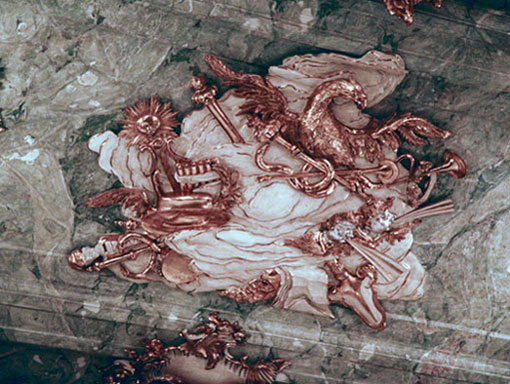
We met Jeanette and Morgan at the train station in the early evening and quickly set off with them to join their friends Rion and
Natalie who happened to visiting the area at the same time.
We headed first to that most touristy of places - the Hofbrauhaus - Munich's most famous beer hall. The
large room was crowded, but we somehow managed to find 6 places at the end of one of the long wooden tables that fill the hall.
We ordered huge mugs of beer and a couple of plates of sausages, cabbage, bread, and pretzels. About every 10 minutes the
oompah band would burst into song and everyone would sing, pound their mugs on the table, toast each other, and drink.
Several old women wearing their Bavarian finery were dancing in the aisles, and a group of very drunken young German men at the end of the
table were trying to impress Jeanette and Natalie. It was a lot of fun.
When we decided to leave, Jeanette told Morgan to stand in front of the band so she could take his picture, and, as he made
a silly face, he was photo bombed by the horn player behind him.


We sampled another more sedate beer hall, and then headed back to the hotel. The New Town Hall was bathed in pink lights,
and, although it was Tuesday night, there were a lot of people out on the town.
Our stay in Munich had gotten off to a great start.





